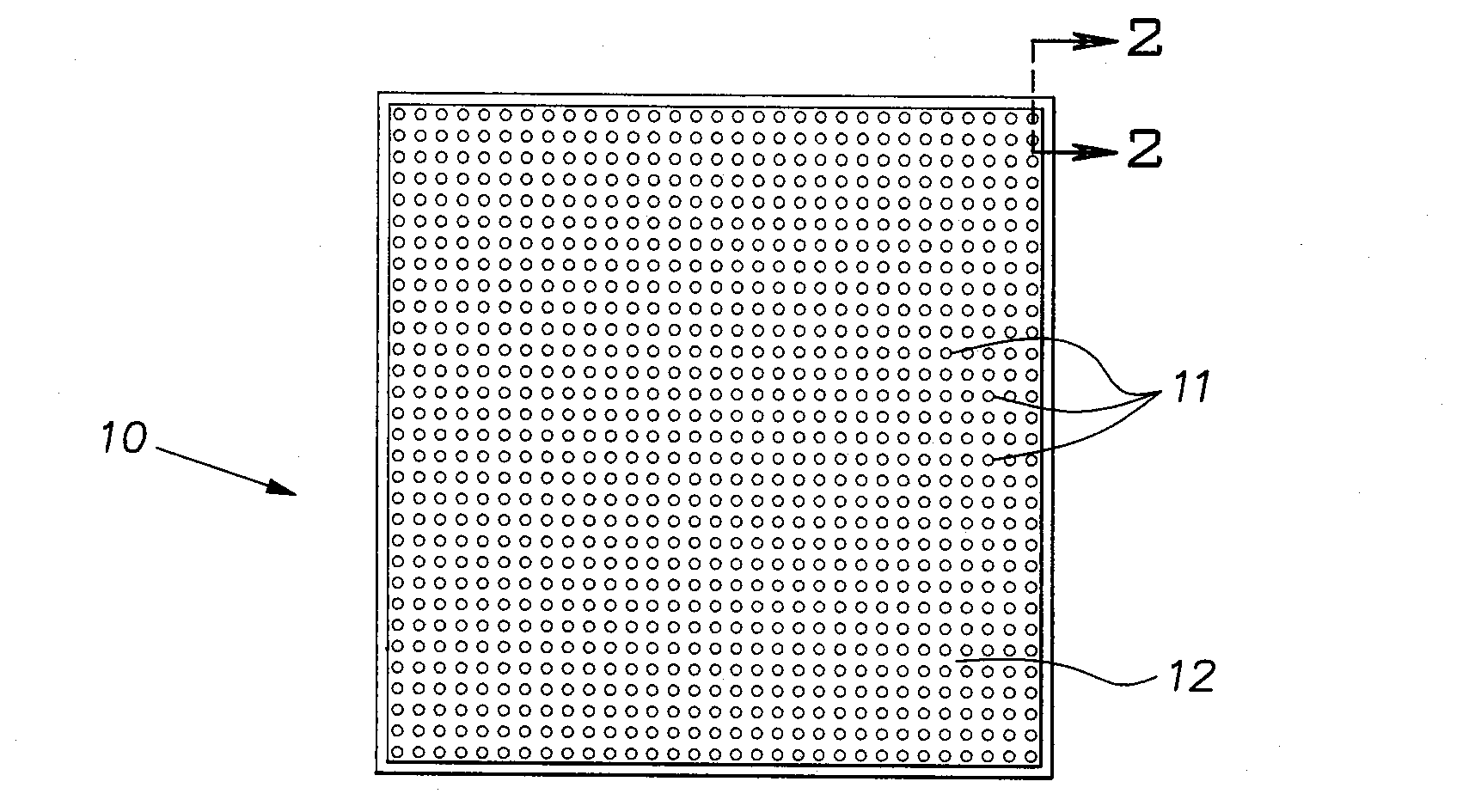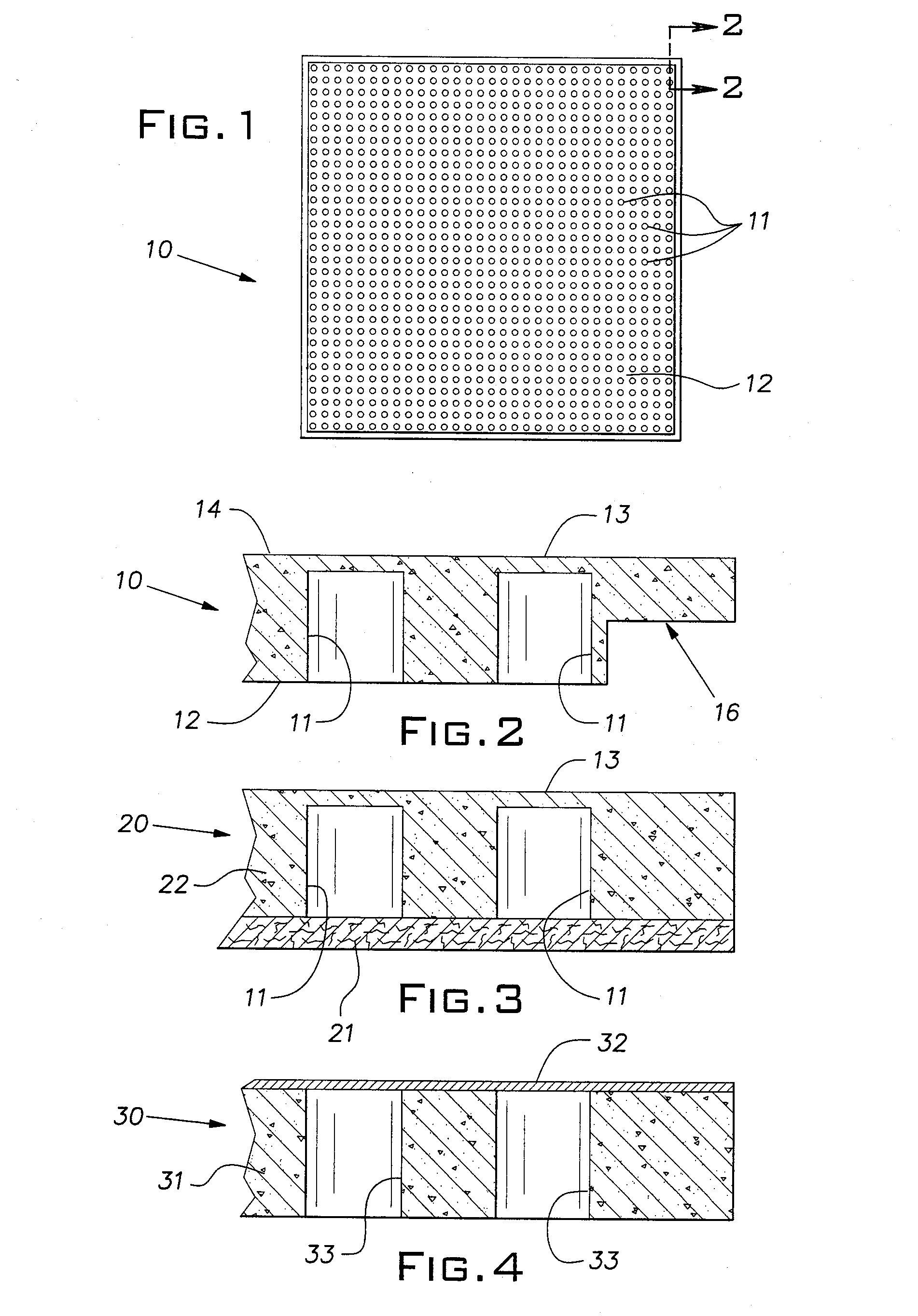Ceiling tile construction
a ceiling tile and construction technology, applied in the field of ceiling tile construction, can solve the problems of sagging out of the ceiling plane, frequent damage of prior art tile, easy damage in shipping, handling and installation, etc., and achieve the effect of easy and neat finishing, low sifting performance, and high resistance to sagging
- Summary
- Abstract
- Description
- Claims
- Application Information
AI Technical Summary
Benefits of technology
Problems solved by technology
Method used
Image
Examples
Embodiment Construction
[0014]FIGS. 1 and 2 illustrate a ceiling tile 10 according to one form of the invention. The tile 10 is rectangular in plan view, as is customary, with the illustrated unit being square and it being understood that the tile can be elongated from that shown. More specifically, the tile 10 will ordinarily be made nominally at approximately 2 foot by 2 foot, 2 foot by 4 foot, 4 foot by 4 foot, 2½ foot by 5 foot, 5 foot by 5 foot, and 1 foot by 6 foot in plan dimensions. The unusual strength of the disclosed tile or core enables the use of relatively large panels without undue risk of breakage. The tile 10 is relatively thin in comparison to the planar dimensions having a thickness of for example, nominally ½ inch or less. The tile 10 is preferably cut from a larger preformed board, ideally of a thickness corresponding to the thickness of the tile.
[0015]The tile 10 is characterized by the inclusion of a plurality of holes 11 that are distributed substantially fully across its room side ...
PUM
| Property | Measurement | Unit |
|---|---|---|
| weight | aaaaa | aaaaa |
| thickness | aaaaa | aaaaa |
| mechanical | aaaaa | aaaaa |
Abstract
Description
Claims
Application Information
 Login to View More
Login to View More - R&D
- Intellectual Property
- Life Sciences
- Materials
- Tech Scout
- Unparalleled Data Quality
- Higher Quality Content
- 60% Fewer Hallucinations
Browse by: Latest US Patents, China's latest patents, Technical Efficacy Thesaurus, Application Domain, Technology Topic, Popular Technical Reports.
© 2025 PatSnap. All rights reserved.Legal|Privacy policy|Modern Slavery Act Transparency Statement|Sitemap|About US| Contact US: help@patsnap.com


